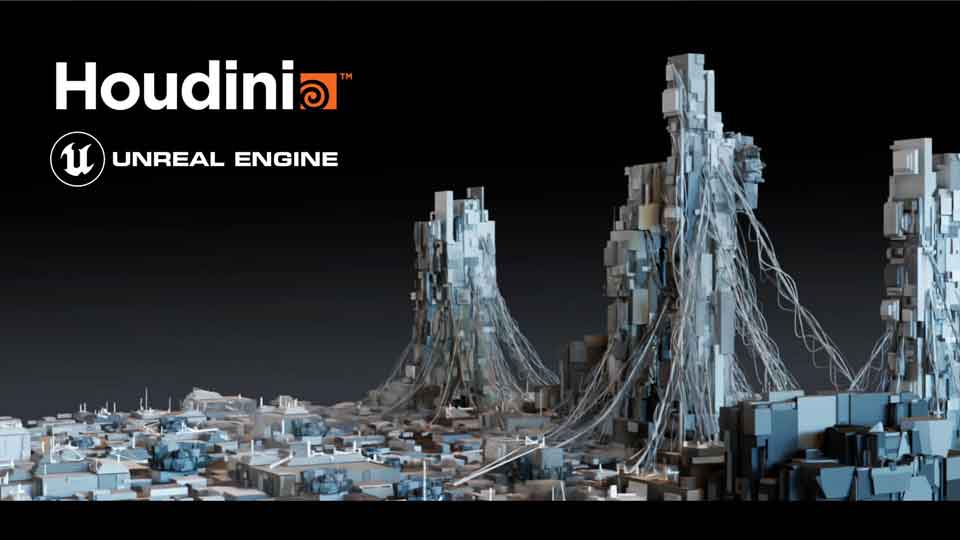
Houdini is a powerful 3D animation and visual effects software developed by SideFX. It is widely used in the VFX industry for creating stunning visual effects for film, television, and video games. A Houdini Technical Artist (TA) and a Houdini Visual Effects Artist (VFX) are both individuals who specialize in using the Houdini software, but they have distinct roles and responsibilities within the VFX industry.
A Houdini TA is responsible for creating efficient and reusable pipeline tools and workflows for several teams (level design, modelling, characters, environment work, VFX...). They work closely with the department Supervisors and other members of the team to ensure that the production runs smoothly and that deadlines are met. They are responsible for developing custom scripts, tools, and workflows using the Houdini software. They also need to have a deep understanding of the software's capabilities and limitations and be able to troubleshoot any issues that may arise. In addition, they need to be able to communicate effectively with other members of the team and understand the needs of the production. Having an eye for artistic detail and experience on how the content needs to be created is a big plus: Say you are a Houdini TA in charge of creating a rope tool. You'll provide a better result if you created some ropes by hand beforehand.
A Houdini TA is a key member, and their role is crucial for the success of the production. They are the ones who make sure that the pipeline is optimized and that the team is able to work as efficiently as possible. They are also responsible for creating HDAs (Houdini Digital Assets) which can be easily shared and used by other members of the team. HDAs are a way to package Houdini networks and their parameters into a single file that can be easily reused and shared. Say you need to create a full city for your game/movie/advertising. The Houdini TA might create a collection of tools like 'skyscraper generator', to either generate full buildings from scratch or to assemble existing parts of buildings created outside of Houdini.
A Houdini TA is a key member, and their role is crucial for the success of the production. They are the ones who make sure that the pipeline is optimized and that the team is able to work as efficiently as possible. They are also responsible for creating HDAs (Houdini Digital Assets) which can be easily shared and used by other members of the team. HDAs are a way to package Houdini networks and their parameters into a single file that can be easily reused and shared. Say you need to create a full city for your game/movie/advertising. The Houdini TA might create a collection of tools like 'skyscraper generator', to either generate full buildings from scratch or to assemble existing parts of buildings created outside of Houdini.
On the other hand, a Houdini VFX Artist is responsible for creating visual effects using the Houdini software. They work closely with the VFX Supervisor and other members of the team to create high-quality visual effects that are on-brand, on-time and on-budget. They need to have a solid understanding of the Houdini software and be able to use it to create a wide range of visual effects, from simulations of physical phenomena such as water and fire to more abstract effects such as particle effects and volumetric lighting. A Houdini VFX artist should also have a good understanding of the principles of animation, lighting, and compositing. They need to be able to work with a wide range of input including live-action footage, 3D models and 2D elements, and be able to combine them to create realistic and believable visual effects. They are the ones who take the tools and assets created by the TAs and use them to create the final visual effects.
While both Houdini TAs and VFX artists are experts in using the Houdini software, their roles are different. Houdini TAs are mostly responsible for creating the tools and workflows (focus on procedures) that the art team will use, while Houdini VFX artists (among others potential users), use those tools to create the required output (props, enviros, visual effects, etc). Houdini TAs are more focused on the technical side of things, while Houdini VFX artists are more focused on the creative side. Houdini TAs are more like the engineers of the VFX team, while Houdini VFX artists are more like the artists.
Both Houdini TAs and VFX artists can take advantage of the various resources available to them to learn and improve their skills, such as the SideFX Labs, which offers a wide range of free tutorials and resources to help users learn and master the Houdini software. They can also take advantage of various online resources, including forums and online communities, to share knowledge and collaborate with other Houdini users. Additionally, both Houdini TAs and VFX artists can take a Houdini course to learn the software, or learn Houdini for free by using the free version of the software, which is called Houdini Apprentice. Houdini Apprentice is a free version of the software that has most of the features of the commercial version, but with some limitations, such as rendering and licensing restrictions. This makes it a great way for beginners to learn the software without having to invest in a commercial license.
One major difference between a Houdini TA and a Houdini VFX artist is that TAs tend to have a stronger background in programming and scripting, while VFX artists tend to have a stronger background in 3D modeling, animation, and visual effects. This is not to say that TAs can't create amazing visual effects or that VFX artists can't write scripts, but these are the areas where they tend to have the most experience and expertise.
Houdini's versatility is one of its strengths, and both TAs and VFX artists can use the software for a wide range of tasks, such as modeling, animating, game development, and many more. Houdini's powerful procedural workflows and its ability to handle large amounts of data make it an ideal tool for big tasks such as enviro creation, prop generation, crowd simulation, destruction, fluid simulation, fire simulation, among many others. In the game industry, its powerful node-based toolset makes it a great choice for creating game assets, effects, and gameplay assistance tools.
In conclusion, while both Houdini TAs and VFX artists specialize in using the Houdini software, they have distinct roles and responsibilities within the VFX industry.
What about Houdini Technical Artists for videogames, movies and other industries? There is plenty of work not related to VFX...
Proceduralism is not exclusive from Houdini.
TECHART WORLDS

